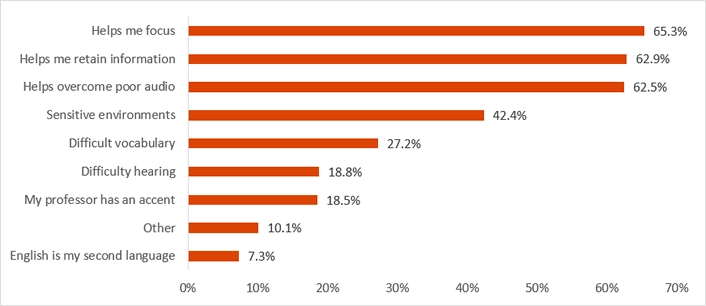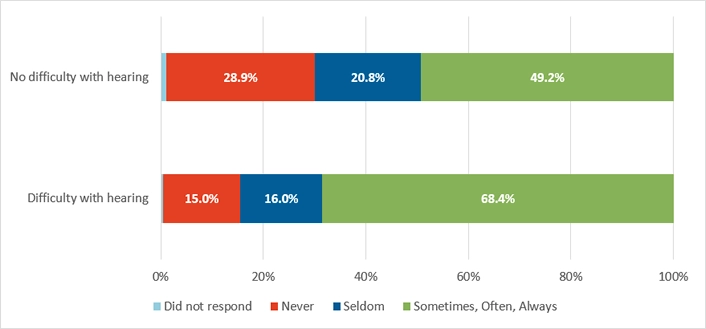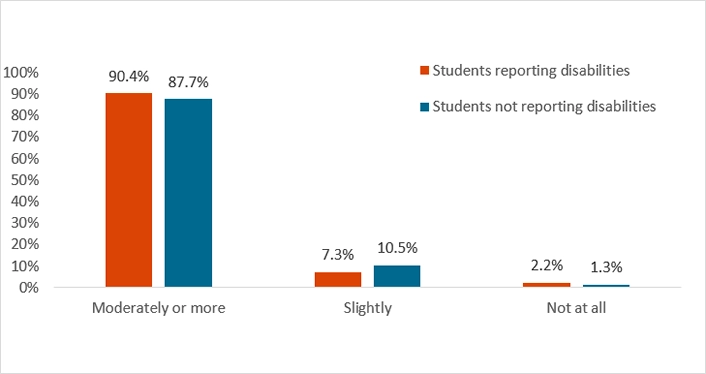Benefits of Captions
Importance of Captions for Everyone
Adding captions to your videos provides a number of benefits to your viewers. Over 100 studies have shown that captions assist in comprehension and memory, and help users pay attention to the video. According to Accessible Social, there are many reasons your users might benefit from captions:
- They are in a noisy or loud environment where audio can’t be heard such as public transportation, a restaurant, or even at home.
- They are in an environment where audio can’t be used, such as a library, doctor’s office, etc.
- The audio in the video is low quality and difficult to understand, such as a conversation with background noise.
- The video is in a language they don’t speak or fully understand yet.
- The speech in a video is too fast, too quiet, or the speaker has an accent that is difficult for them to understand.
Some users also prefer watching videos with captions. Caption use has become especially prominent among younger generations. A recent study by the BBC found that four out of five viewers between the ages of 18-35 use subtitles some or all of the time while watching TV on any device:
| Age | Use Subtitles Some or all of the Time Watching TV on any Device | Deaf, Deafened or Hard of Hearing |
|---|---|---|
| 18-24 | 80% | 10% |
| 26-35 | 64% | 15% |
| 36-45 | 55% | 15% |
| 46-55 | 37% | 14% |
| 56-75 | 23% | 18% |
Captions for Users With Disabilities
The World Health Organization estimates that by 2050, nearly 2.5 billion people will have some degree of hearing loss and 1 in 10 will have significant hearing loss. If captions are not available on digital content, all of these people will not be able to access it. While captions are critical for viewers who may be Deaf or hard of hearing, captions also help viewers who may have a learning disability, an attention deficit, or autism.Captions for Learning
A national research study that surveyed 2,124 students from 15 different colleges and universities found that 98.6% of students find captions helpful. Further data from the study showed that:
- 71% of students without hearing difficulties use captions at least some of the time.
- 66% of ESL students find captions "very" or "extremely" helpful.
- 75% of students that use captions said they use them as a learning aid.
- 52% of students that use captions said captions help as a learning aid by improving comprehension.
- 15% of students don't know how to tell if a video has captions.
- The most common reason students use captions is to help them focus.
- The most common reason students use transcripts is as study guides.
The following graph found in a 2017 Educause article shows the reported reasons students use captions.

The study also found that students with or without disabilities use captions at similar rates.

90.4% of students reporting disabilities and 87.7% of students not reporting disabilities found captions to be moderately or more helpful.

Captions for Marketing and Reach
3Play Media summarized a study by Verizon Media and Publicis Media, which found that “80% of consumers say they’re more likely to watch an entire video with captions.” They also found that “1 in 3 have captions on in a public setting”.
It was also found that consumers not only want captions, but having captions increases Search Engine Optimization (SEO) and video views. 3Play also quoted another study, saying “Discovery Digital Networks showed that YouTube videos with captions had 13.48% more views in the first two weeks and 7.32% more lifetime views, as compared to videos without captions.” The captioned videos also appeared higher in YouTube’s search engine.

